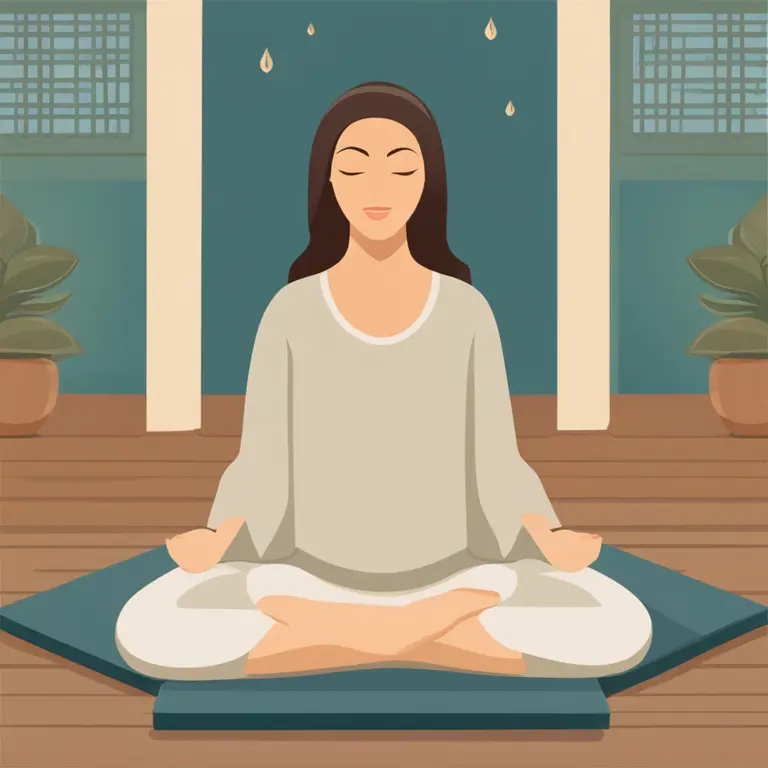
Learn Your Mindfulness Meditation Journey
Learn the art of mindfulness meditation to foster calmness, clarity, and emotional balance in your daily life.
article by Hina Kurosawa
Introduction to Mindfulness Meditation
Meditation has long been a cornerstone practice for those seeking a more balanced and peaceful existence. In our fast-paced world, mindfulness meditation offers a refuge of calm amidst the chaos. Integrating this practice into your routine can help alleviate stress, improve focus, and enhance overall well-being. As we delve into this tranquil sojourn, understand that mindfulness is the art of being wholly present in the moment, aware of where we are and what we’re doing without being overly reactive to what's going on around us.

The Set-Up for Success
The initial step in leading a mindfulness meditation involves creating an environment conducive to relaxation and introspection. Choose a quiet space where interruptions are minimal. Ensure comfortable seating, perhaps with cushions or a mat, to support your posture. Ambient temperature should be regulated to prevent discomfort. Lighting, too, is essential; soft, dim lighting or natural light provides serenity. Finally, instruct participants to silence electronic devices to preserve the sanctity of the meditative space.

Adopting the Right Posture
Your physical state during meditation significantly influences your ability to focus and relax. Encourage meditators to sit with their back straight, yet not stiff. Hands can rest gently on the knees or in the lap, while feet are planted firmly on the ground if seated on a chair. For floor seating, the cross-legged position is commonly used. Stress the importance of comfort to prevent any physical distractions from arising during the session.

Beginning the Meditation
To commence the practice, ask participants to close their eyes or lower their gaze. They should draw attention to their breath, noticing the natural inhalation and exhalation without attempting to control it. This focus on breath will serve as an anchor throughout the meditation, returning them to the present each time their minds wander. The rhythmic pattern of breathing is a powerful tool to stabilize the mind and instill a sense of inner peace.

Guiding Through Awareness
Instruct participants to observe their thoughts, feelings, and sensations without judgment. Mindfulness meditation is about recognition and acceptance, allowing experiences to exist without resistance or clinging to them. If minds drift to the past or future, gently remind the group to acknowledge this without self-criticism and to refocus on their breathing. This nonreactive observation is the essence of cultivating mindfulness.
Incorporating Mindfulness into Daily Life
Mindfulness does not end with meditation; it's a practice to be integrated into daily routines. Encourage participants to take mindful moments throughout their day, perhaps while eating, walking, or during brief pauses in their work. By doing so, mindfulness becomes not just a sessional activity but a continuous contribution to their quality of life, nurturing a profound, ongoing relationship with the present moment.
Concluding the Meditation
As the session draws to a close, invite participants to slowly bring their awareness back to the room, noticing the environment and their body's presence within it. A soft bell or gentle guidance can signal the end of the practice. Encourage a few minutes of reflection on the experience, and invite discussion. Emphasizing the importance of regular practice will assist them in reaping the full benefits of mindfulness meditation over time.
Published: 1/18/2024
Modified: 1/18/2024
More predictions
Come back here soon to learn more about yourself and your future


Mastering The Path Of Mindfulness Meditation
Discover the serene path of mindfulness meditation with this comprehensive guide designed to help you find inner peace and clarity.


The Connection Between Meditation & Mindfulness
Discover the relationship between meditation and mindfulness, and how these practices contribute to mental clarity and inner peace.


A Beginner's Guide to Mindful Meditation Explained
Discover the essentials of mindful meditation to start your journey towards inner peace and heightened awareness with this beginner-friendly guide.